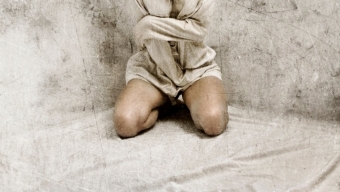NOIR NOTEBOOK
I was quite taken by the work of photographer Daniel Jenkins when I came across it and emailed him a Q&A for a bit of an insight into his practice. Here is his response starting with his introduction.
**CONTAINS SOME NUDITY**
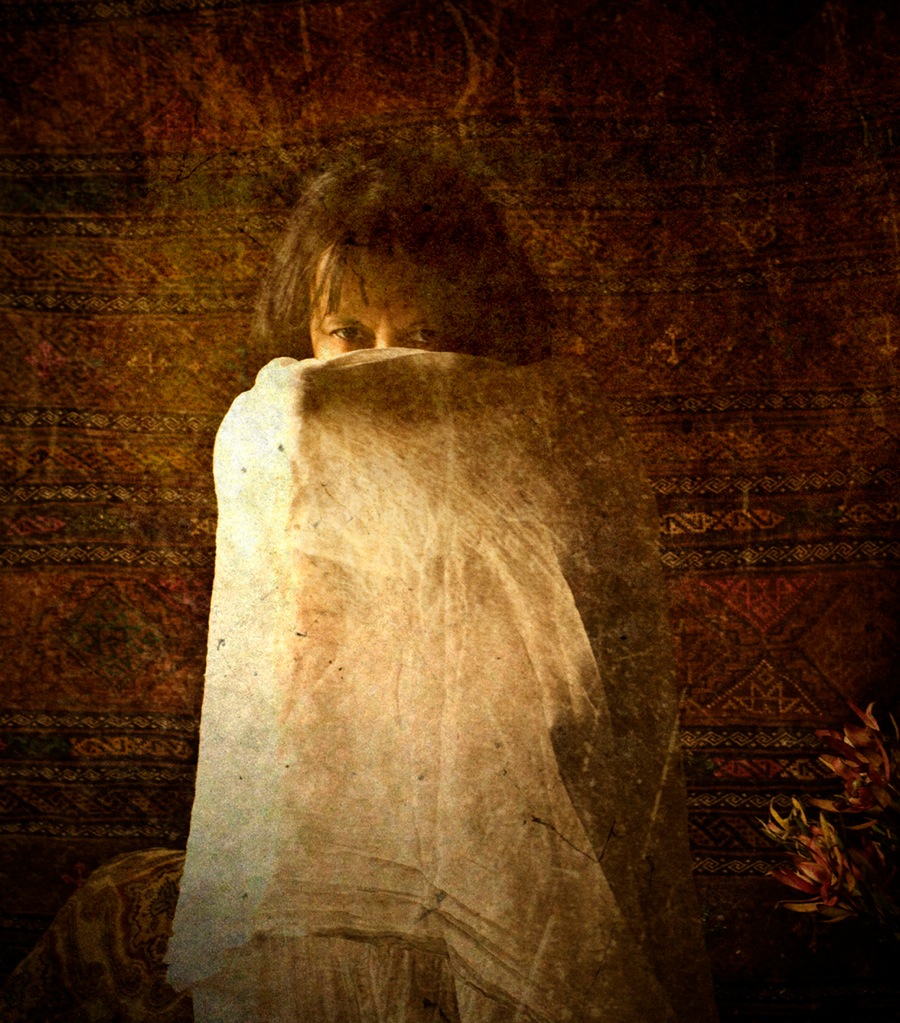
Daniel Jenkins: I wrote something similar to this for Ewan Bell’s ‘digital photography’ magazine a few months back.. I tend to get a bit cheeky and, well, up myself when it comes to questions that many readers expect a conservative answer from. Not that I think this interview is like that… you’ve seen my pictures…! I do a lot of interviewing for my ‘job’ video doco work and have to often ask questions I already know the answers to just so I can get the words from the subject’s mouth, not my imagination. And sometimes some questions are just plain stupid but with a purpose and I get a great response from those. So I’ll be frank, candid and answer from my personal give-a-shit point of view as I often do for lists. I find general readership happy to accept mediocrity as the new black. I hope yours is different.
I take what I do in the studio very seriously, almost always work with the underdog equipment… good gear but not mainstream penis envy machinery because, having come from film and ASA 27 film at that I go back a good way and know from experience and my great-grandfather, grandfather and father, all photographers, that the camera has very little to do with the picture except get the image onto some kind of holding medium… even if I do know all the rules and have a head full of information that all gets put to use in an instant, unlike most of the over-monied big-gunned de-suited weekend warriors on chat forums with science-perfect knowledge of cameras and lenses they’ve never had access to… so my attitude is very much like that of my familial predecessors.
and while I’m a whiz at photobloodyshop I don’t use it to make my images what they are. If you go back to my carbonmade page and read the pdf about my 2010 exhibition it will explain how I use traditional darkroom techniques we create in the 60s and 70s for image special effects (photo-textured orthographic film acetate overlays) to acquire my textures, not photoshop. Photoshop is just the delivery medium. The pictures are made with layers in ‘real time’ of texture-printed acetate on top of acetate prints and backlit on a huge lightbox and re-photographed. Then spat out in… or through.. photoshop because the printer likes it. I’m 65 and have had a camera of some sort in my hands since I was 9 years old back in the deep south of the US. I’m used to doing it the hard way. I still have my orig 1956 box brownie, my great grandfather’s Leica III (F) that he used when he retired from 11×14 sheet field work in the wild west of the US, my grandfather’s M3 happy snap camera when he wasn’t shooting his Speed 4×5 (which I also have) for his photo-journalist job in the US Prohibition days and the Fed-S I used for ‘work’ in the 70s in germany… amongst others. I’m such a camera nerd.
Anyway, I will try to do your questions justice and will definitely deal with them seriously. I can be an arrogant asshole at times… Then we can decide on which images do what I want them to do for your site.
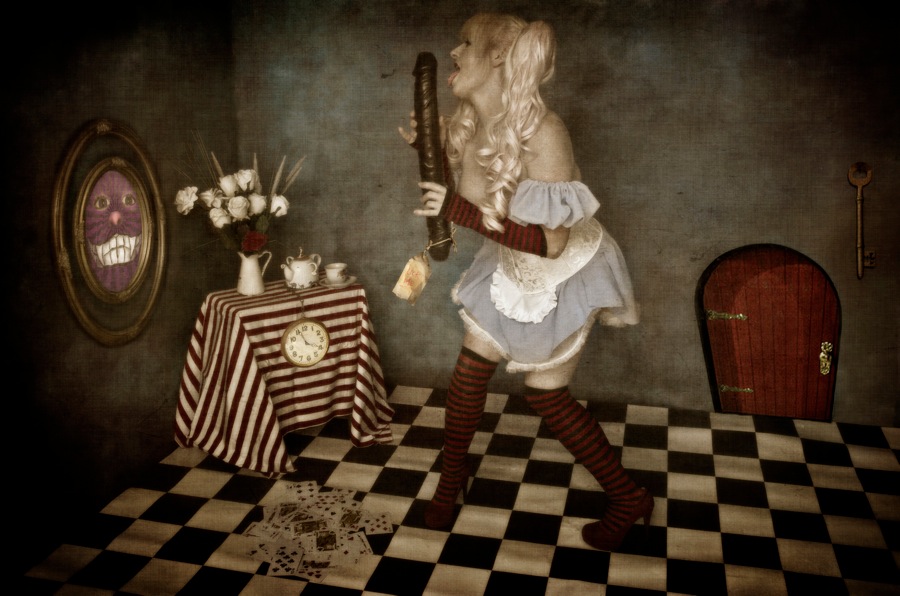
Daniel Smith: How would you describe your photography to somebody who had not seen it before?
DJ: Right. Well, firstly, why do I have to..? but ok… my style of work is popular in Europe and especially in the former eastern Europe amongst a breed of image makers self –anointed as ‘narrative photographers.’ Not doco, not street, but studio constructed image makers. Images that tell a story and keep the viewer engaged in the photograph always looking for ‘more.’ Usually because there is… sometimes these images are just too much hard work for many viewers because they don’t tow a linear subject line. I use nudes because they are often not meant to be in my pictures… so I make them part of the dichotomies I compose. I can spend weeks making a set and I will shoot maybe fifteen frames for half an hour and send the model packing. I pretty much only ever shoot nudes, have done since art school in the late 60s and right through to this weekend… and onwards. I just like using the figure in places other’s wouldn’t know how. I have a bizarre imagination and rarely think in a linear manner.
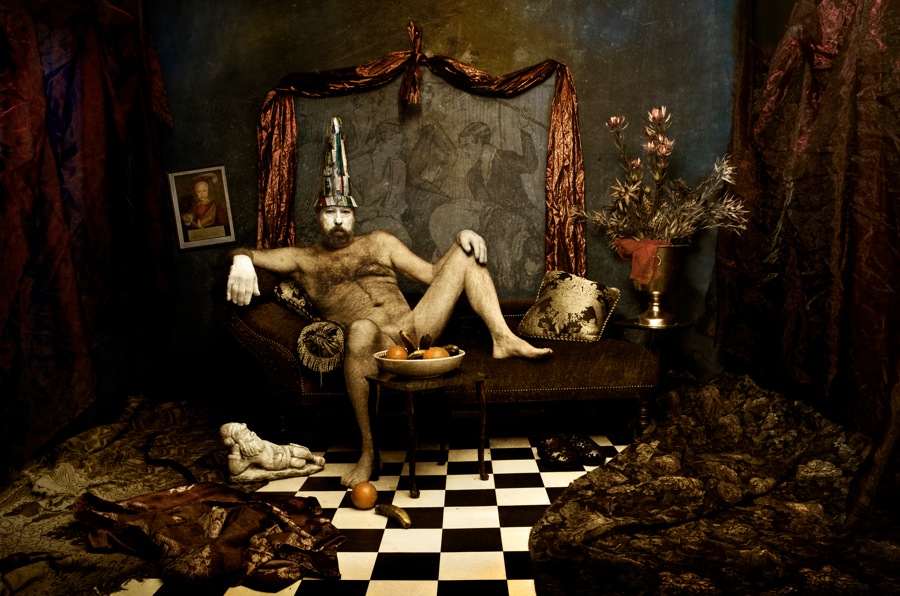
DS: When did you fist start in photography?
DJ: 1956, I was 9 years old. I had a brand new box brownie, used to lie in the back yard and take pictures of clouds. When my mum passed 25 years after my dad, in 2006, I cleared out the attic (in the US, south Carolina) and found all those cloud photos. They had kept them, would have been a hundred or more, all shot on Pan-F 120 roll film. Then I went on a did some shooting in high school in germany for the school paper, etc, my own stuff and then I did a degree at uni (in the us, Georgia Southern University), finished in 1970. from there I went on to work as a doco photographer in the race riots and pre-integration of schools in Georgia until 1975, then back to germany in 1977 after two years teaching in an art school in texas. In germany the second time I worked for the allied forces as a civilian photographic information consultant often on the side of the border not considered the west. This is when I used the Fed-S as well as my grandfather’s M3. silent.
As kids my brother and I were woken up each morning by our dad and told how to dress for school by one simple expression. ‘today’s a 3.5 day, boys…’ ‘today’s an f11 day, boys..’ my brother and I still use that expression. We had the ‘Sunny 16’ rule beat into us, practically… we ‘know’ light.
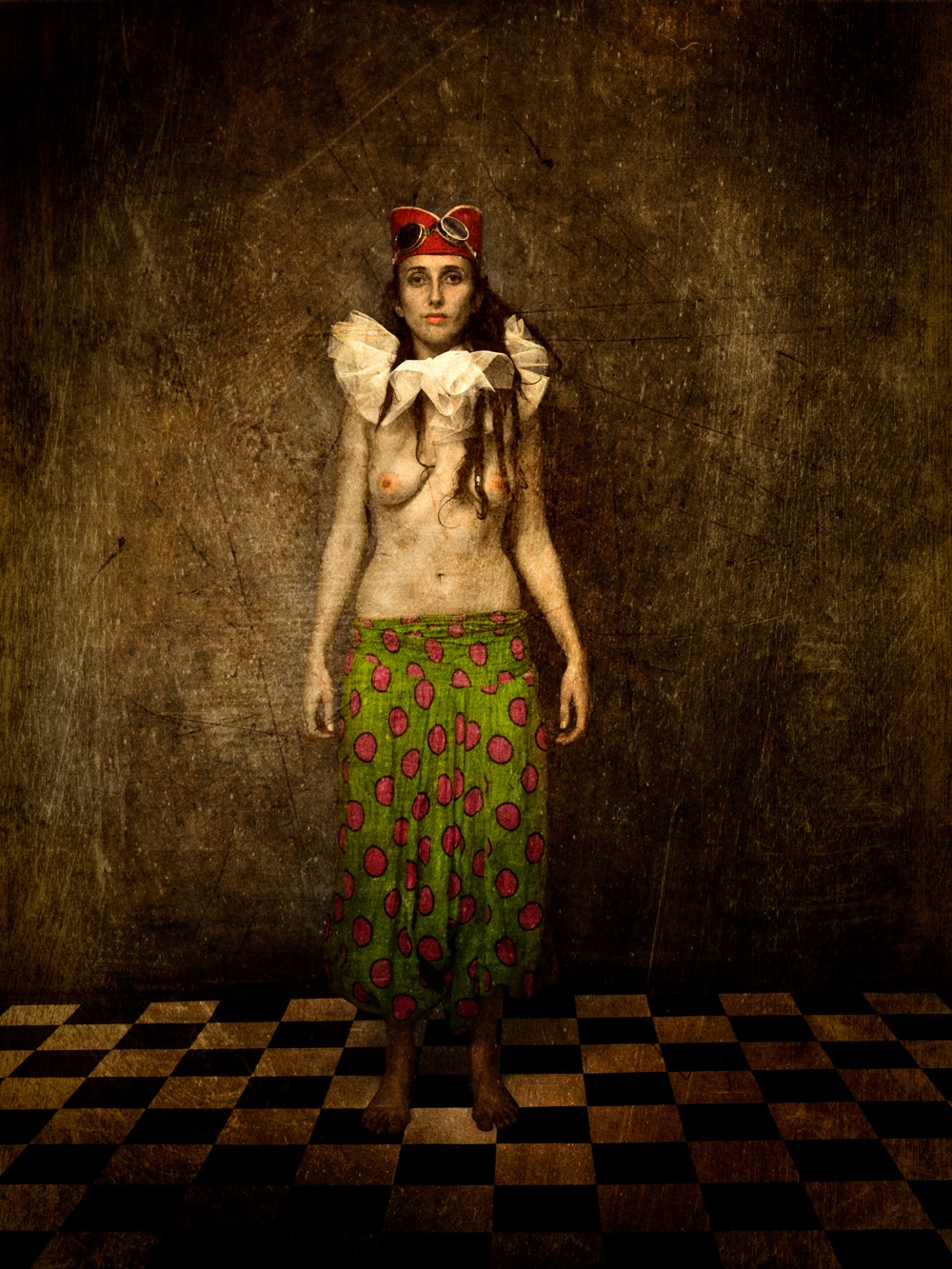
DS: Who or what inspires you?
DJ: Risk. And controversy.
DS: How do your ideas and concepts take shape and evolve?
DJ: I just taught a workshop to six keen budding mature age photographers out here where I live, yesterday. I talked a lot about how instinct and understanding are used to determine in an instant the right composition of an image, the settings in the camera if not pre-set before I go out to shoot (which I always do…) and how to make decisions that can be resolved in the camera with one frame… full frame with no allowance for cropping. I hate landscapes so I shoot them as a ‘cleansing’ exercise… mainly to cover my karma-loving ass. I don’t do ‘pretty.’ But I have… for a job. Studio glam for nearly14years but never shot a wedding (ptui ptui) and never will.
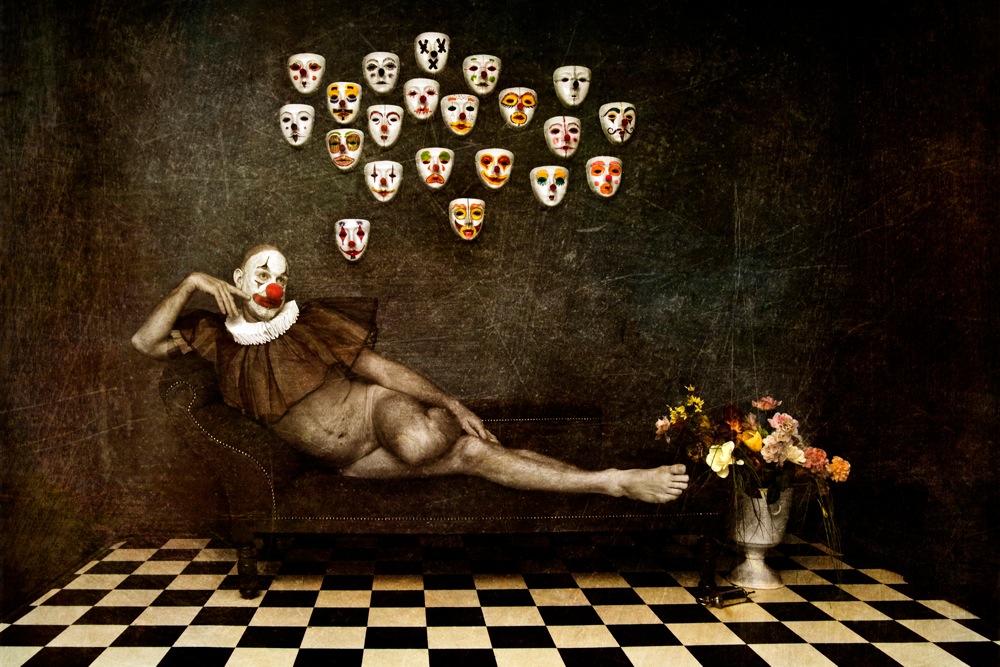
In studio my ideas come to me when I meet a model. I never ask a model to pose, they ask me. I’m just lucky that way. And I rarely pay models because they just want to be in a picture and love the risk and excitement of doing something no one would ever think they’d ever do. Ever. Amen. I love that. Our shoots are fun and always yield great results for my style of work. And take less than an hour. I shoot rarely more than 30 frames in a session. I know what I want. They are brave women. (and men). So when I meet a model I usually get a sense of what they would look like in a set. Then I talk, see where their tolerances are and then we negotiate the concepts. Everyone HAS to be 100 bloody % in agreement on a shoot… no humming or hawing.. if there is I pull the shoot. Everyone has to want to be there. Full stop. Then I spend a week or more building or devising the set, even build the props (I can do that and have the studio space to do it in).
But the basic idea evolves from the first meeting, then the set comes to mind then I bring in all my incongruous elements for irritation, eye-travel and argument.
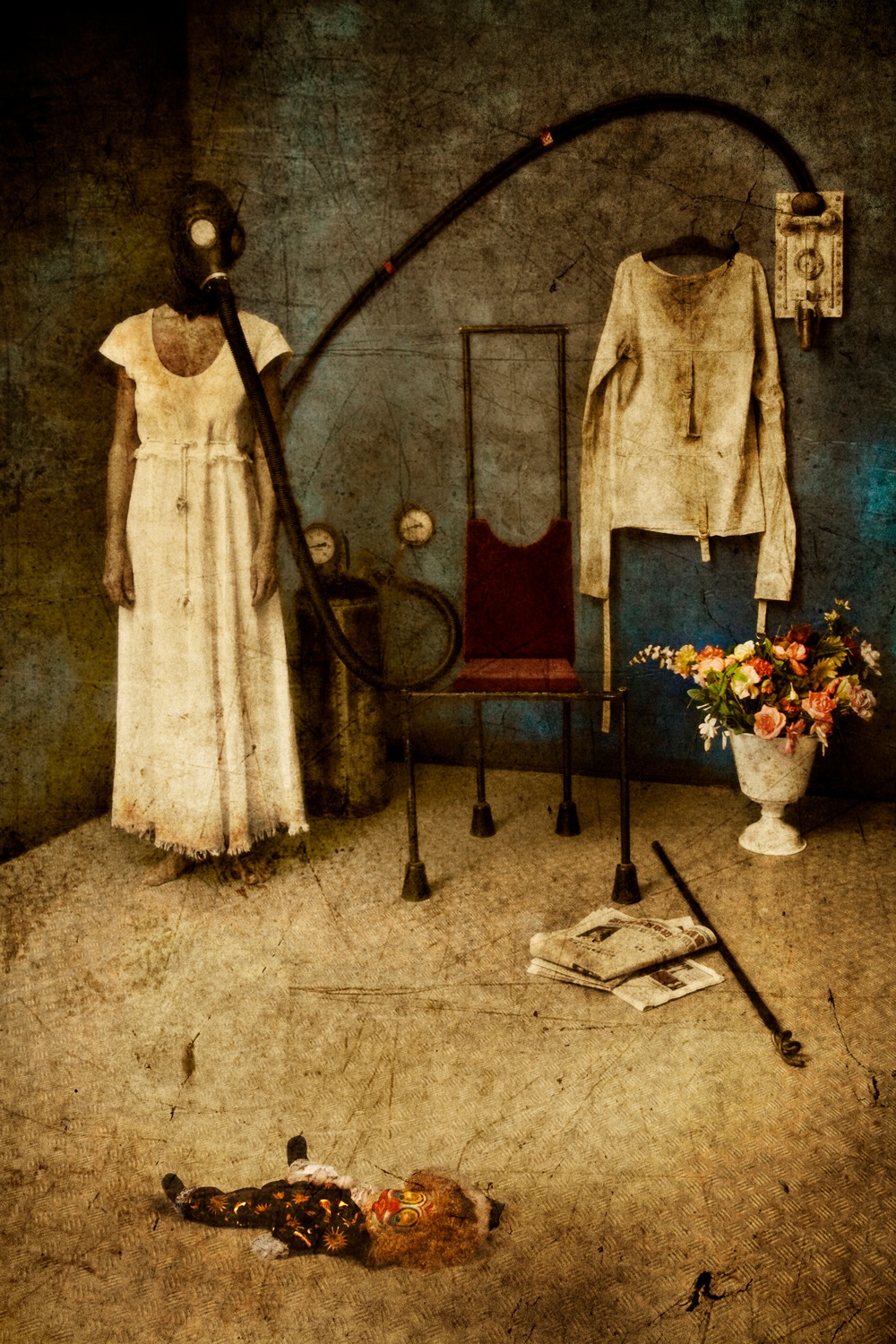
DS: Can you explain your working methods and process?
DJ: I think I just did..? I’m methodical but still spontaneous. Nothing happens by accident but I always have a backup plan in case something changes in a shoot. I know my equipment and then I push it, all of it. And I build stuff to hold cameras in weird places, rig up remote trigger systems that an electronic device can’t reach the camera for (yes, happens) and I do what I have to to get the shot. And I always make the models wish they’d done more yoga because what makes a great shape for me in the picture is often very painful for the model. Not my problem.
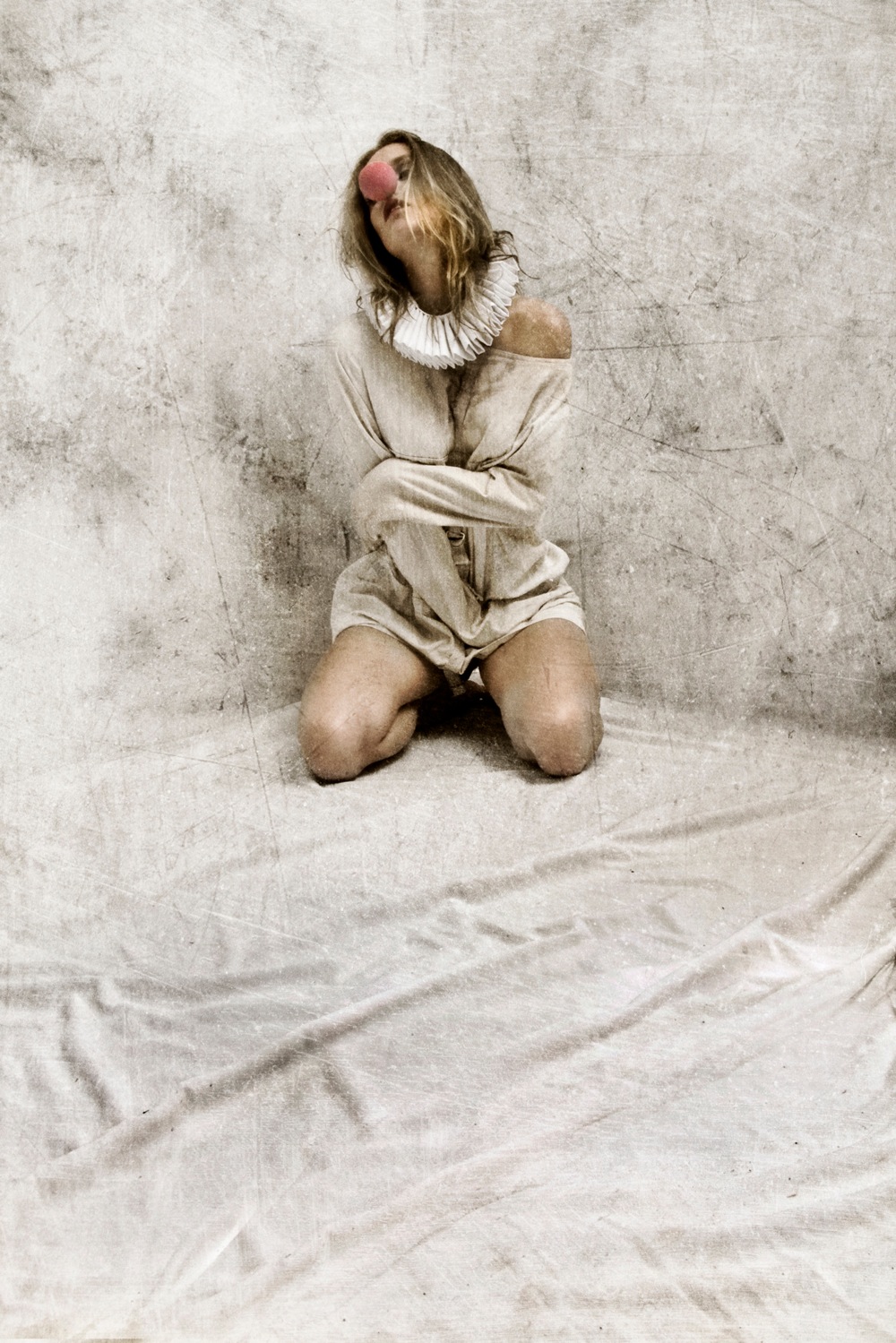
DS: How big a change was the move from film to digital for you?
DJ: I went in screamingly stupid and naïve. I don’t read magazines and I’d never heard of digital until I went into Michael’s in Melbourne to buy Pan-F 35 in 1998 and was told they didn’t carry it anymore. Then they tried to sell me a digital camera so I bought a Kodak/Nikon 315 DSLR in Singapore through a friend. My 1970s Nikon F lenses fit it. The files from it still hold up today and I developed a technique to get A1 pics from it unpixellated. Nope, won’t tell.
Digital is quick but I still shoot film with a fuji GW 690, the Ms and a lovely old Kowa SETR II 35mm leaf shutter camera. And an F2A. and my Bessas R series. I have eleven CV and Leica lenses. I also use an Epson RD1S and my new fuji Xpro1 with the M adapter for the german lenses. I do like rangefinder formats in bodies. I have a Nikon dslr new camera as well. it’s ok. But I’ve also been with photoshop (yes, I know…) since it was on a single floppy disc for a mac classic… V.1. so I do know it quite well and yes, do use it at times. I also like, and prefer Capture One for real work. If I could afford a Phase One Camera, even a back for the RB-S, I’d have one…
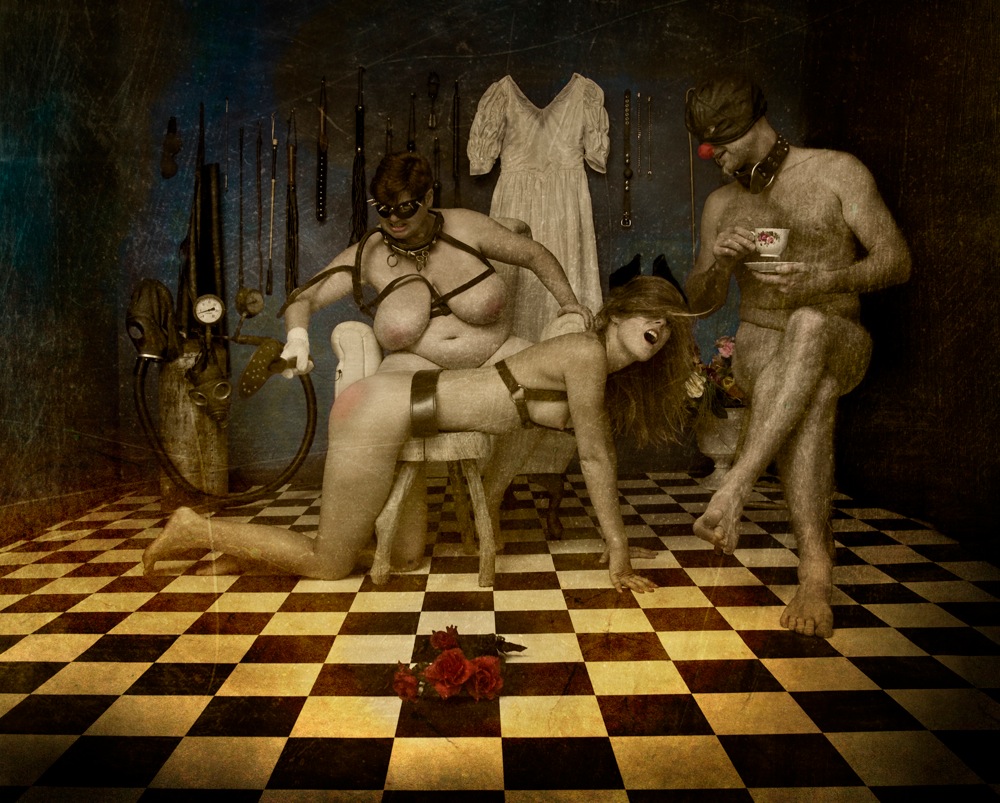
DS: What challenges arise when photographing your subjects?
DJ: I do probably 90% studio work now. Keeping people laughing through a shoot is important. So I talk a lot… I talk a lot anyway, and keep them comfortable. Nudes are more fragile and delicate than shooting children at a shopping mall. This is also why I shoot fast so we have minimum exposure in the studio. So I have to be organised to keep everyone happy. And we review every single frame afterwards. And there is never alcohol in my studio before or when I shoot. This is a very important rule when working with the figure.
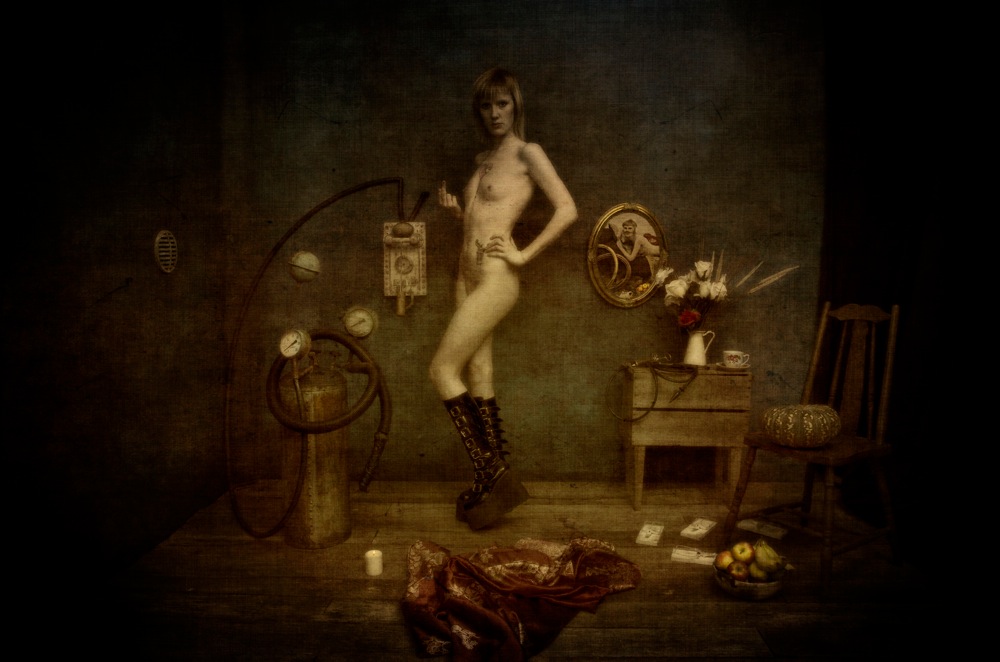
DS: Why do you hate landscapes?
DJ: Because I find them boring, pacifying and intellectually unchallenging. Doctors’ waiting room photographs of old bush huts and lightening scapes of night-lit cities over the Yarra. And perfectly lit and balanced scientifically condom-covered exposures with no emotion or personality. But then there are some I like… like when the photographer has risked real death or injury to get the shot. Safe sucks. My brother is a landscape night-lit electric storm doctors’ waiting rooms photographer. And a scientist. And boring. Perfect shots with no guts. But he learned from the same parents I did. I often wonder what went wrong. But then, he is American and wears khaki trousers and votes republican.
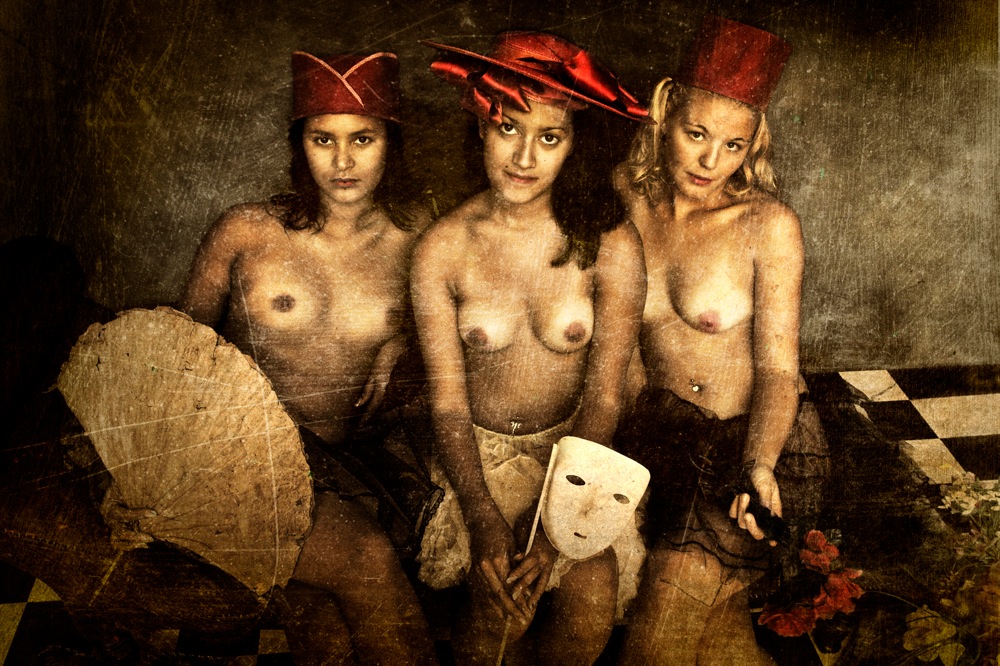 DS: What do you think of contemporary photography/photographers?
DS: What do you think of contemporary photography/photographers?
DJ: I have my faves. I admire Bill Henson for his work as well as his sense of risk. I follow the work of Jan Saudek tirelessly. I’m not that keen on plastic chairs in the rain in an Essendon back garden under a Hills Hoist with a beer can nearby… even if it is a mirror of society. Street photography is so easy to get wrong but rarely does anyone know why… bodyscape nudes were done and dusted in the 1940s so give ‘em away, guys… I don’t expect a lot of people to take on what I do as their kind of art or even call it photography. But I don’t do my work for anyone but me and the few who seek the work out. What is photography anymore, anyway? A paint brush that goes click or whirrrrrrrr…. With prints that come from OfficePlace on wobbly framed wannabe canvas printed by people who aren’t professional printers..
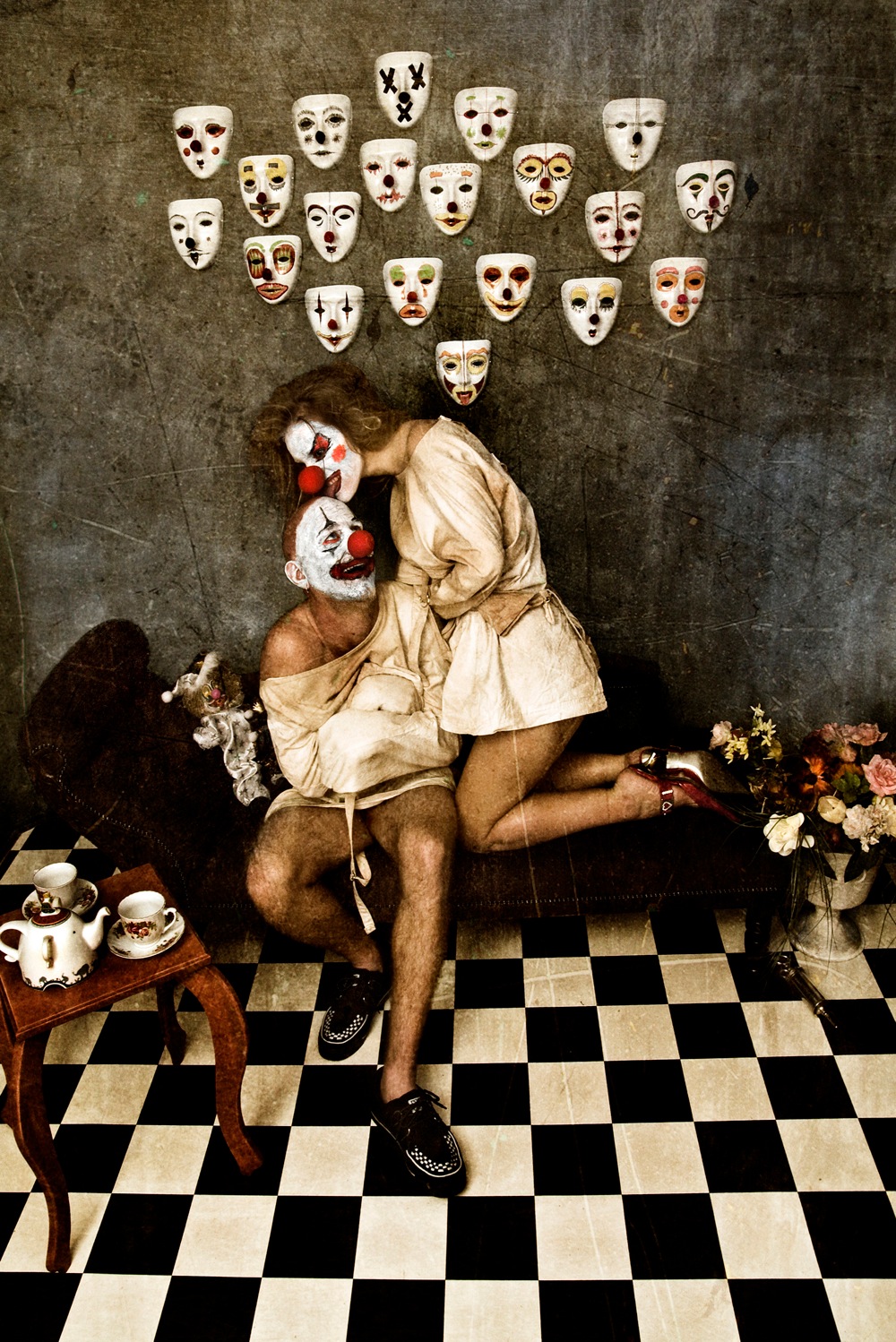
DS: What projects do you have on the horizon?
DJ: More of the same but with a different twist every year, different sets, different set threads (plastic flowers are gone, fruit is nearly gone, maybe toast will be next). And more exhibitions… exhibitions is my lifeblood. Not interested in sales even if people do buy them at times. And definitely not interested in awards and comps. Just as well, you say? I’m not fussed. I just have to do what I do. I’ve been doing it since before 1972, nudes, I mean, so I’m not new at the game. I just have to do this work. And the ideas, bizarre sets and access to new amateur keen and adventurous models are an endless resource.
DJ: You didn’t ask me about composition… critical and so easily done badly by so many. I never crop unless I just want a square picture. And I use the Theory of the Golden Mean ever since I was taught it at art school in the 60s. but I also use a twist. Nearly every composition leans to the right of the printed frame with a very dark or empty space on the left to create tensioned balance. I think it is very important to keep the viewer a bit on edge and uncomfortable and wondering why some images are just so compelling, if not off-putting… edgy and annoying but satisfying and unanswerably questioning… why?
All images are copyright Daniel Jenkins ©.
Questions by Daniel Smith
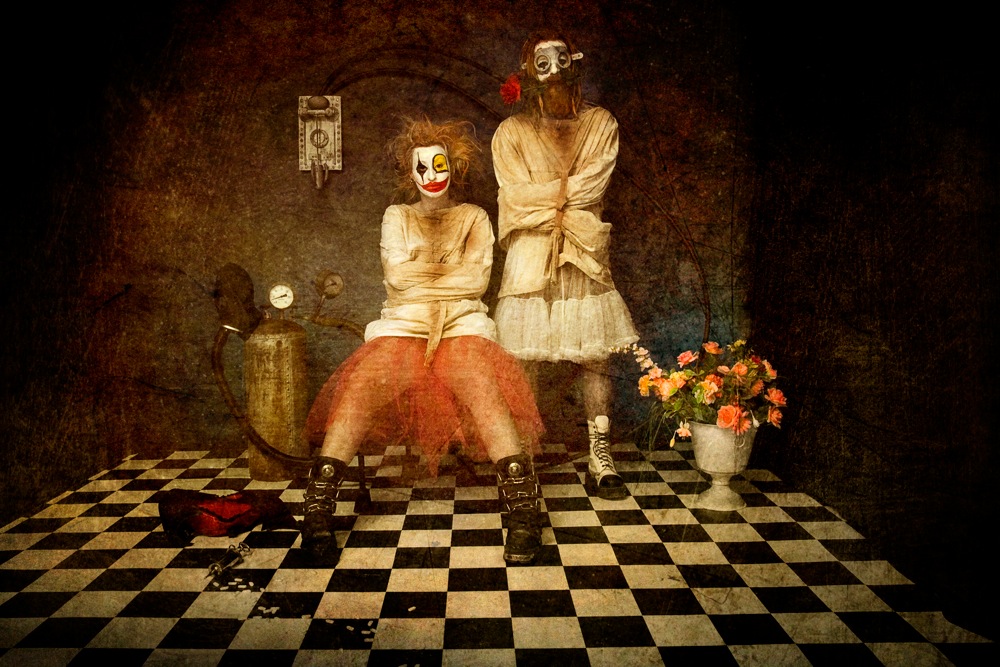
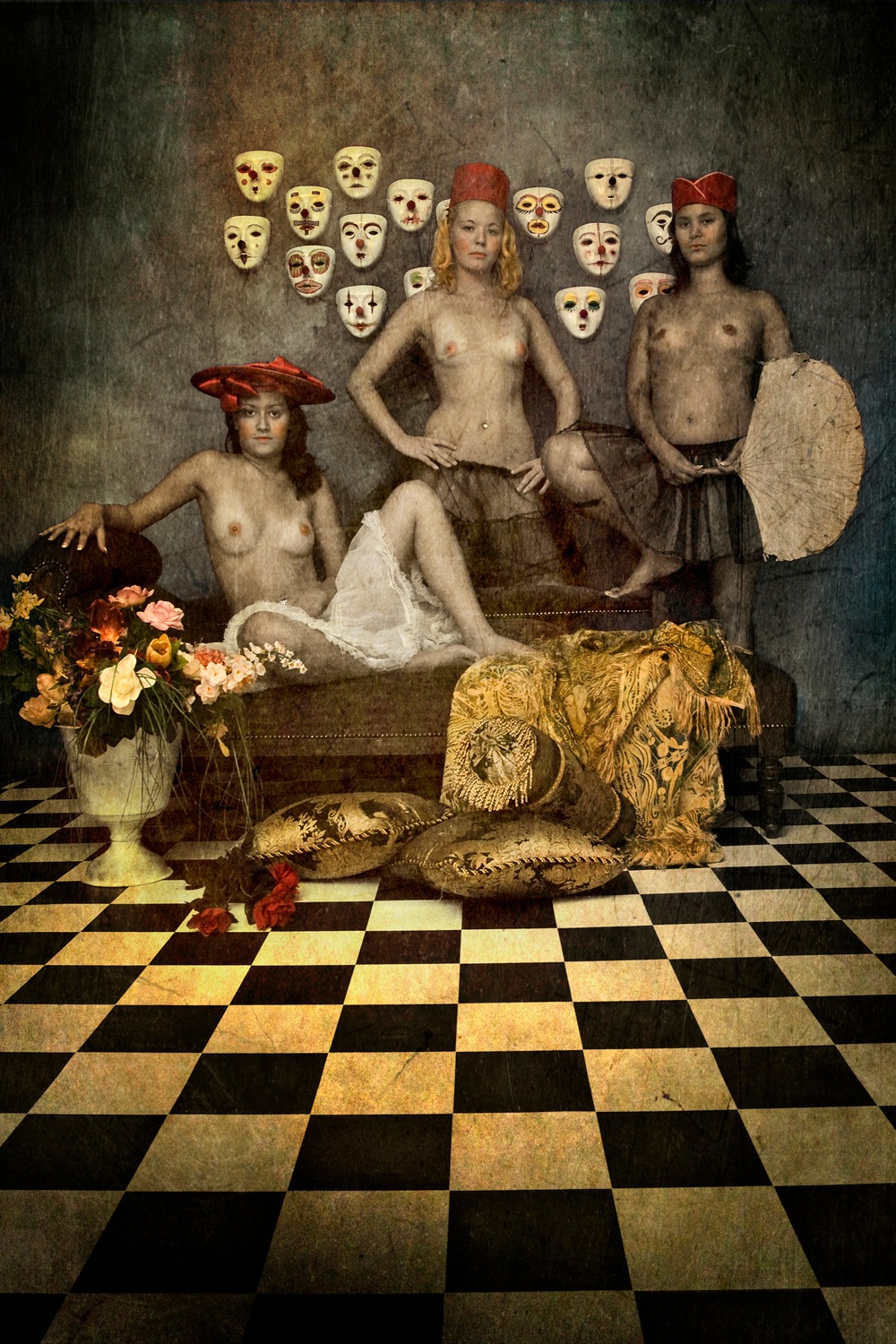
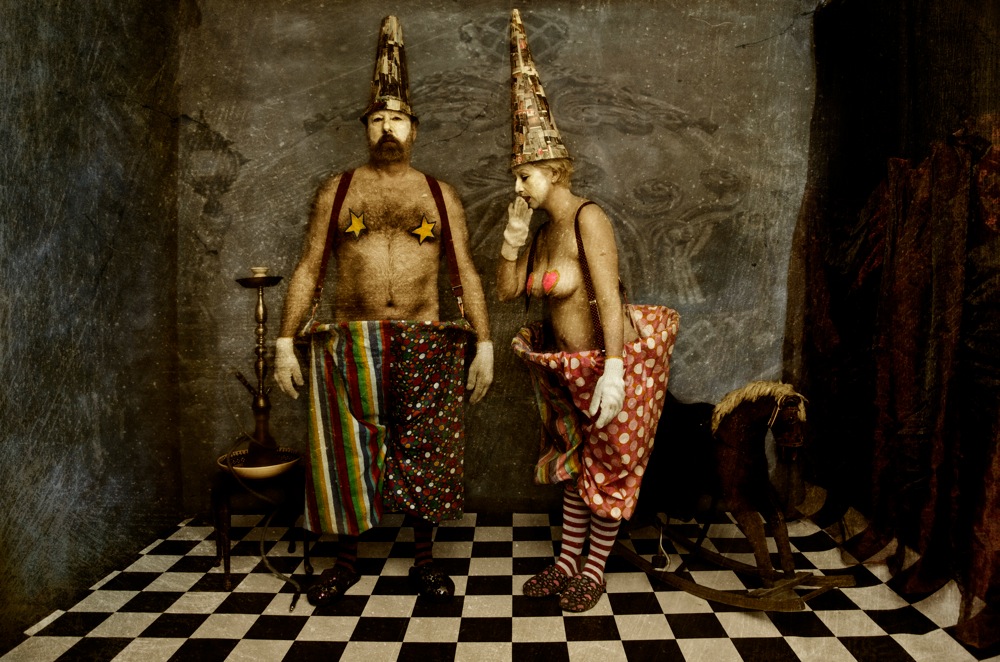
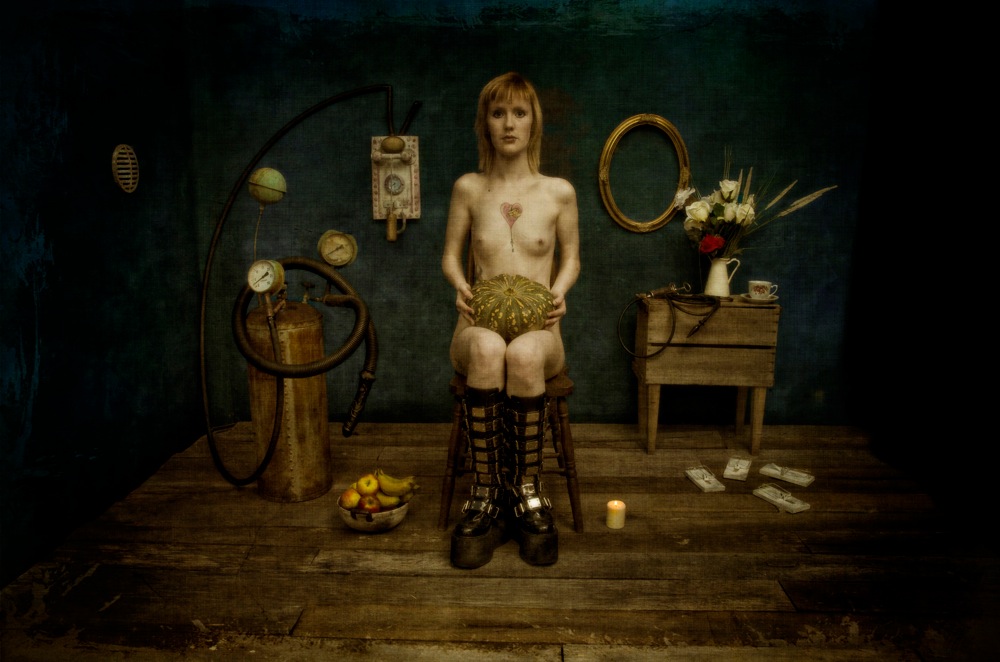
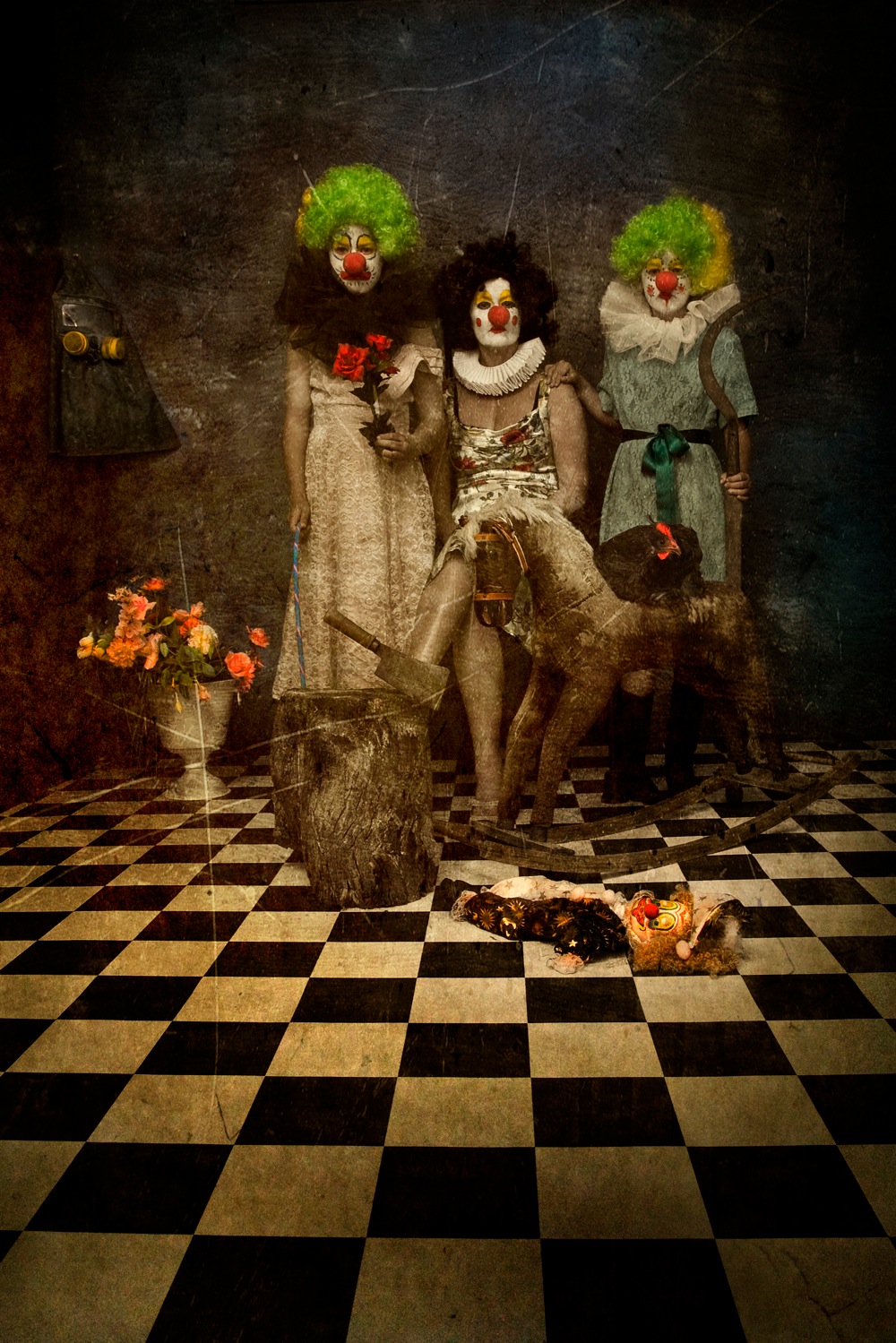
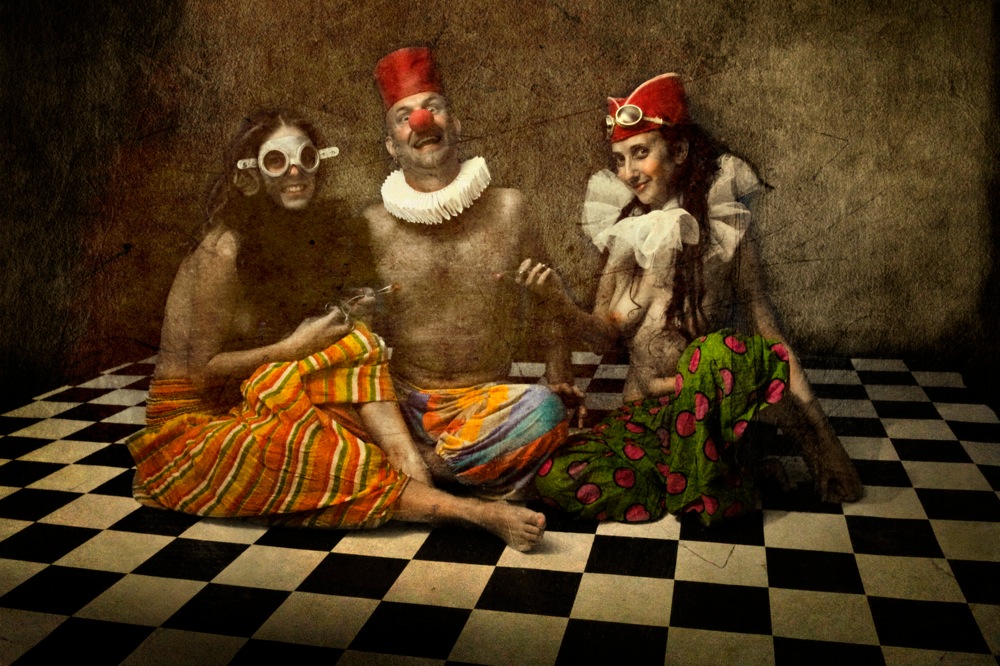
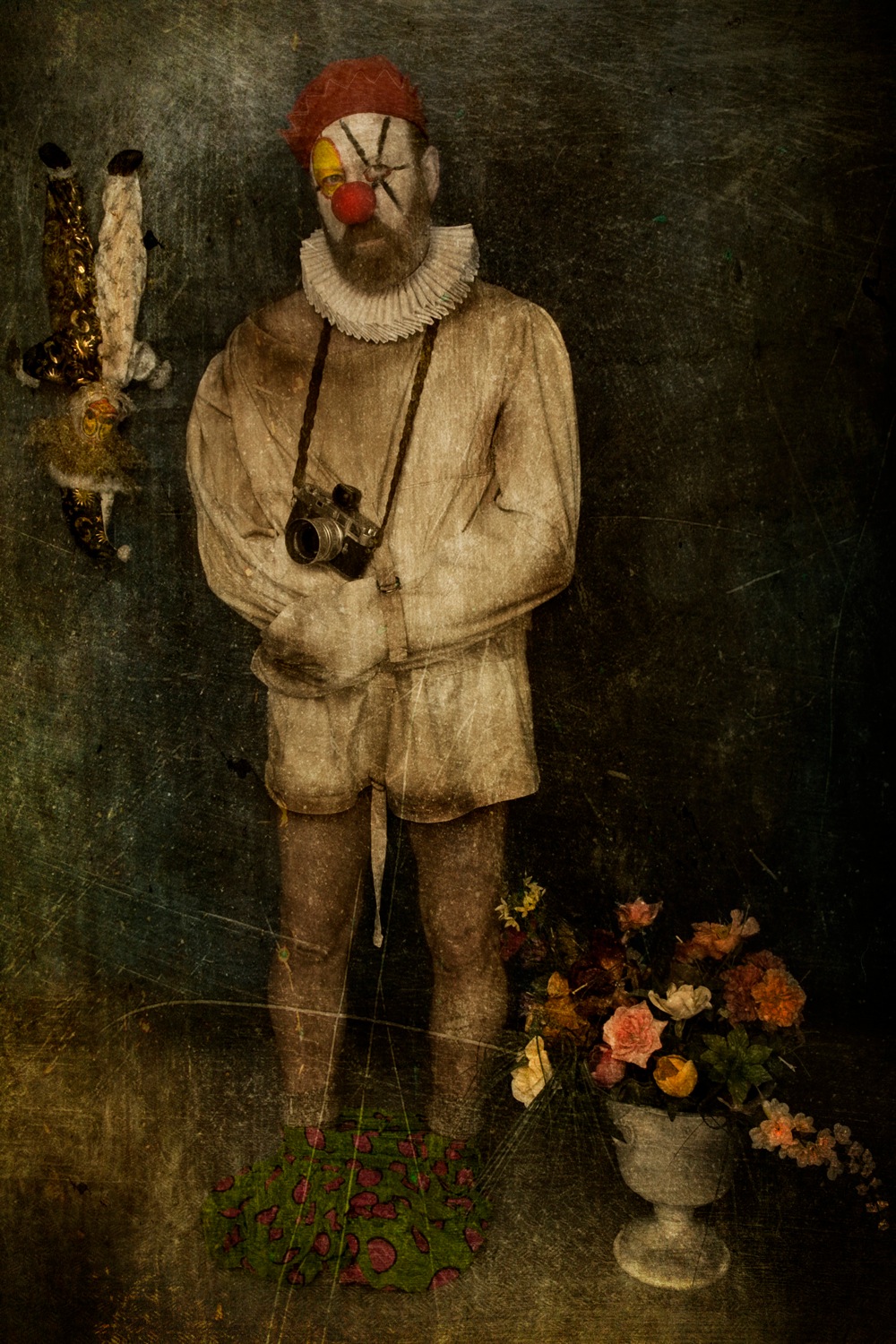
Questions by Daniel Smith.
Images © Daniel Jenkins

The Kind Warmth Awaits – Geoff Roberts
November 03, 2014
Featured IG: @elsa_isabella
November 03, 2014
Zach Penhall – Sydney Music Photography
September 07, 2014
Jafflechutes: North America
April 09, 2014
Summernats – A photo series by Geoff Roberts
April 02, 2014
ART PRINTS ASIA – Newsagency Gallery
February 22, 2014
Joel Beerden at Damien Minton Gallery 20/12
February 22, 2014
Black and White by Melinda Cartmer
January 08, 2014
Photography by Tim O’Connor
December 03, 2013
The Magpie Song – The Paintings of Ben Cahill
November 24, 2013
Sloth Society – Tales From the Tea Room exhibition
November 24, 2013




